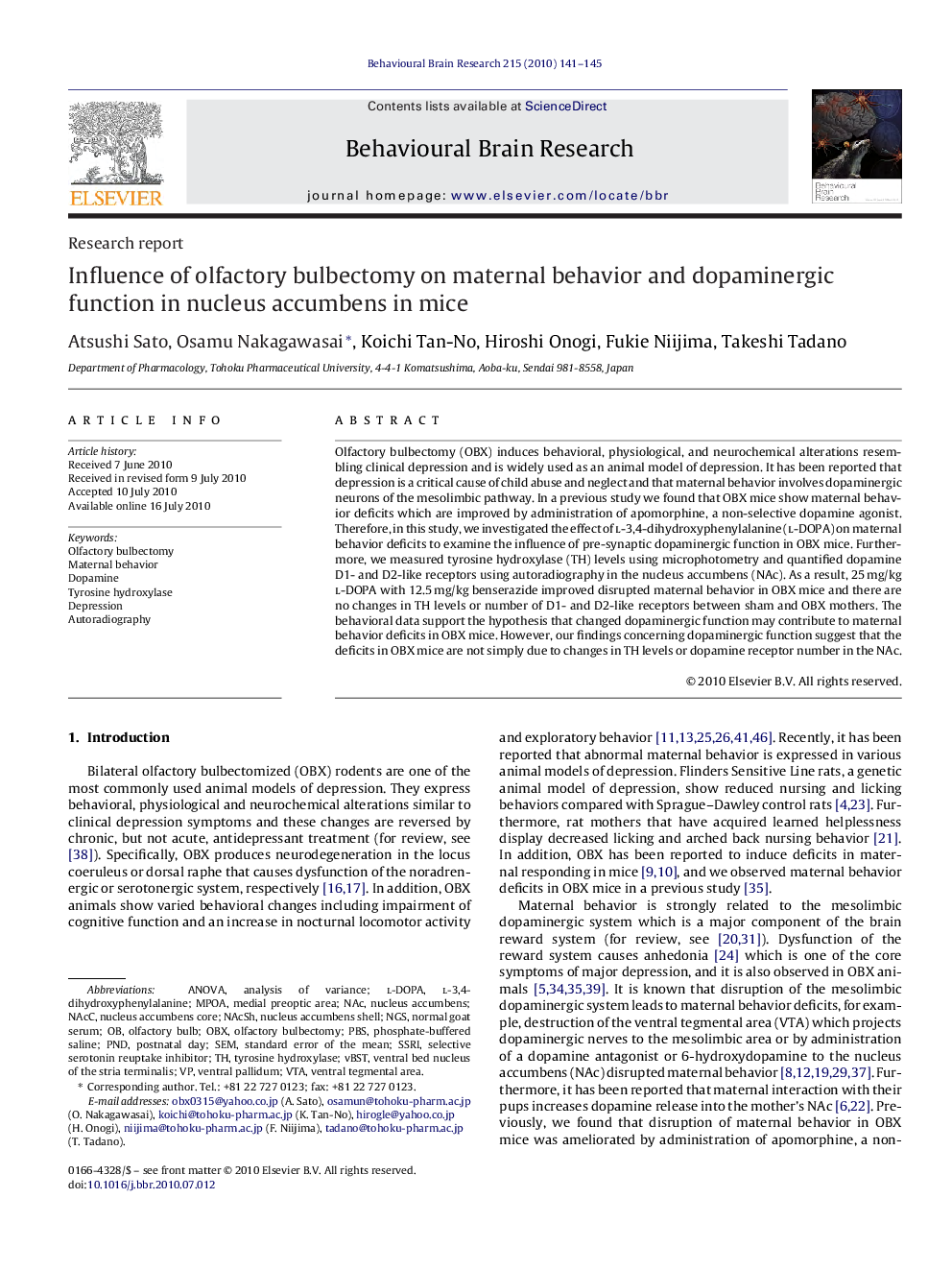| Article ID | Journal | Published Year | Pages | File Type |
|---|---|---|---|---|
| 4314104 | Behavioural Brain Research | 2010 | 5 Pages |
Olfactory bulbectomy (OBX) induces behavioral, physiological, and neurochemical alterations resembling clinical depression and is widely used as an animal model of depression. It has been reported that depression is a critical cause of child abuse and neglect and that maternal behavior involves dopaminergic neurons of the mesolimbic pathway. In a previous study we found that OBX mice show maternal behavior deficits which are improved by administration of apomorphine, a non-selective dopamine agonist. Therefore, in this study, we investigated the effect of l-3,4-dihydroxyphenylalanine (l-DOPA) on maternal behavior deficits to examine the influence of pre-synaptic dopaminergic function in OBX mice. Furthermore, we measured tyrosine hydroxylase (TH) levels using microphotometry and quantified dopamine D1- and D2-like receptors using autoradiography in the nucleus accumbens (NAc). As a result, 25 mg/kg l-DOPA with 12.5 mg/kg benserazide improved disrupted maternal behavior in OBX mice and there are no changes in TH levels or number of D1- and D2-like receptors between sham and OBX mothers. The behavioral data support the hypothesis that changed dopaminergic function may contribute to maternal behavior deficits in OBX mice. However, our findings concerning dopaminergic function suggest that the deficits in OBX mice are not simply due to changes in TH levels or dopamine receptor number in the NAc.
